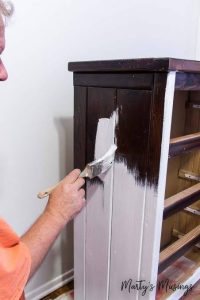Table of Contents
Introduction
Painting furniture, especially after years of constant use, is rewarding but stressful. It gives the home a fresh look and of course, doing it yourself makes it more rewarding. Asides from the fact that you get to do the entire designing, make mistakes, etc., painting furniture is rewarding. It is cheaper than having to involve somebody else, which could be on the pricey side.
Furniture painting might make you think you could pick up a brush and paint your furniture, but not to put you off or anything; it is more technical than that. What happens if you are on a budget and can’t afford to call on somebody at the moment? Hope is not lost as you can give your home that professional touch it needs without the paint chipping or peeling off.
So many techniques are in existence for painting furniture. You should use the best of them all, which would also go along with your budget. You should note that home beautification with the paint involves many items; instruments and what have you, and let’s not forget the color.
Your home doesn’t need to stay bare and without paint for years, just because you are waiting to save up and call a professional’s services. It will be stressful and time- consuming yes. Still, I promise you that you will look back at the customized setting you have made in your home and smile whenever you see it.
Materials Required For Painting Your Furniture
There are materials you will need to give your home the exquisite style you expect to see after painting your furniture. These materials are also not expensive, and they work together to make your home stand out. Based on what you want, you can get other things, but we are only providing you with the basics of what you would need to paint your furniture.
Learn how to paint things other than furniture by checking out this post on How to paint a room
Paintbrush, Foam roller, and Paint sprayer
You can substitute these three materials for each other. It functions as materials used to apply paint to your furniture.
Primer
This primer provides your furniture with a glossy look while preparing for painting.
Paint
Paint is the primary material to be applied to the furniture.
Topcoat
Topcoat is applied over the already painted furniture to make the paint become shiny and last longer.
Oil soap
Oil soap functions as a cleaning agent for the furniture. Using the regular soap can spoil your furniture, hence the oil soap.
Sandpaper
Sandpaper functions as smoother. Its usage is in the first stage of preparation in removing any former paint.
Steps in Painting Your Furniture
In painting your furniture, there is no hurry in trying to do a rush job. There should be no hurry because hurrying to complete the job would not give the furniture the exquisite and professional look you would want it to have. Also, paints are liable to chip off; hence you would like your painting to last longer. Below are steps you should consider using in painting your furniture:
Prepare your furniture
The furniture has to be prepared first by cleaning it using oil soaps. Another emphasis is on how easily chipping of paint can occur, and you wouldn’t want that. Also, all drawers and cabinets have to remain open for you as part of preparation.
Sand your furniture
Sanding your furniture is required so that you can have a smooth surface while painting. You can file your furniture using sandpaper to allow for a smooth surface.
Prime your furniture
After cleaning and sanding, a primer of your choice should be used on the furniture to protect it from stains and color change.
Sand your furniture again
Using the sandpaper, lightly sand your furniture to allow for a professional finish when you finish working on the paint.
Paint your furniture
Now that all of that has gotten out of the way, you can now paint. We advise you to sand your furniture after every paint coating. It will take more time, but it will last even longer. Your paint style should be a thin coat on the furniture using a paint sprayer, paintbrush, and foam roller, all depending on what you have. A brush is better for corners while the others are best for the main furniture.
Finishing touches
Now you are done with painting, and we will advise you to wrap your furniture up after the paint must have dried off in the span of 24hrs. Wrapping or sealing your furniture for at least 30 days will give it further protection to last longer. For topcoats, you could consider using furniture wax or any water-based coat. Usage of water-based topcoats has its advantages for your furniture, I assure you.
Painting your furniture doesn’t need to be given out for others to do when you can do it yourself and give it the same professional treatment. With the steps outlined here, your furniture appears with a touch of style, class, and professionalism.

